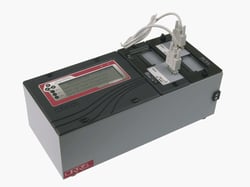No matter how careful you are when building a cable or harness, mistakes can occur. Whether from damaged parts, human error, or an accident, don’t be surprised to find a defect during a final test. However, there are ways to minimize the risk of wiring errors. By watching out for these 3 things, you can decrease the risk of finding defects during final test.
1. Poor Equipment
Not using the proper build and test equipment is a sure way of setting yourself up for errors. Technology exists today that can help operators find errors the moment they occur. Not finding a defect until final test is like waiting for a doctor to point out a cancerous mole. Being proactive can prevent problems further on.
Some of the equipment used to find errors early can be costly and outside of a realistic budget for smaller cable shops. But for those who can afford it, invest in quality automated cable testing equipment that will help you find errors early.
2. Not Testing Often
Many shops wait until after a cable is built before performing a test. While this method may work in some situations, a safer way to test is by moving tests upstream. Test early and often whenever possible.
Waiting until the end to test can sometimes be too late. If a defect is found, the operator must deconstruct the cable—costing time, money, and materials—to find the error. Test early and find the error before the cost goes up.
3. Not Checking the Specs
One of the biggest reasons for wiring errors is not paying close enough attention to the cable specs. For example, mistakes happen when a test technician performs a “Learn” on a Cirris tester. During a Learn, the test system will read the cable and create a list of test instructions. If the technician does not compare the created test instructions to the cable specs, they may end up with errors in test instructions. Cables tested against those instructions would then fail.
This is a simple error that happens too often, sometimes costing thousands of dollars. As long as the test technician is checking the cable specs regularly, this error has little chance of existing.
For more ideas on avoiding wiring mistakes, visit the Learning Center at cirris.com.
